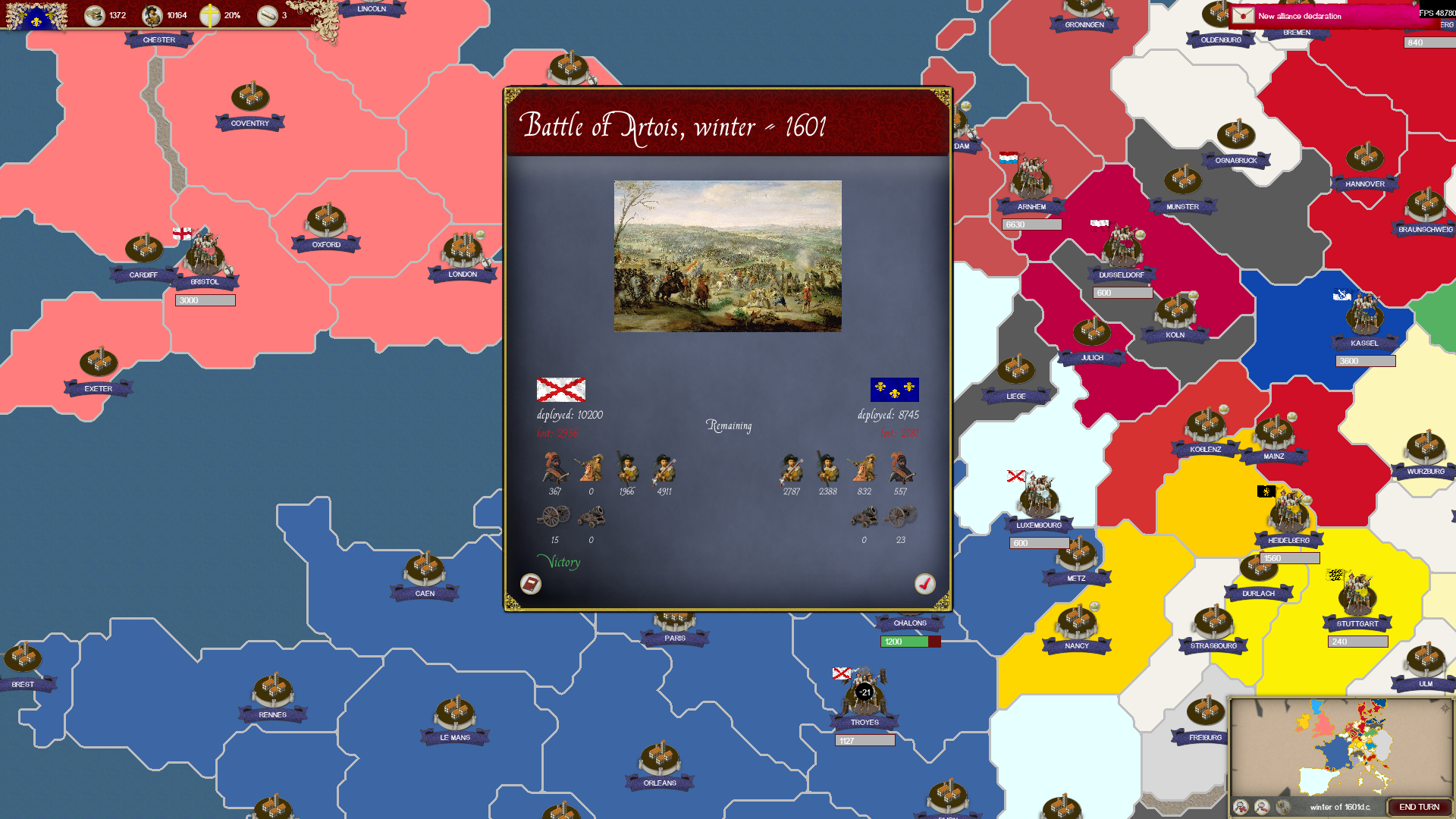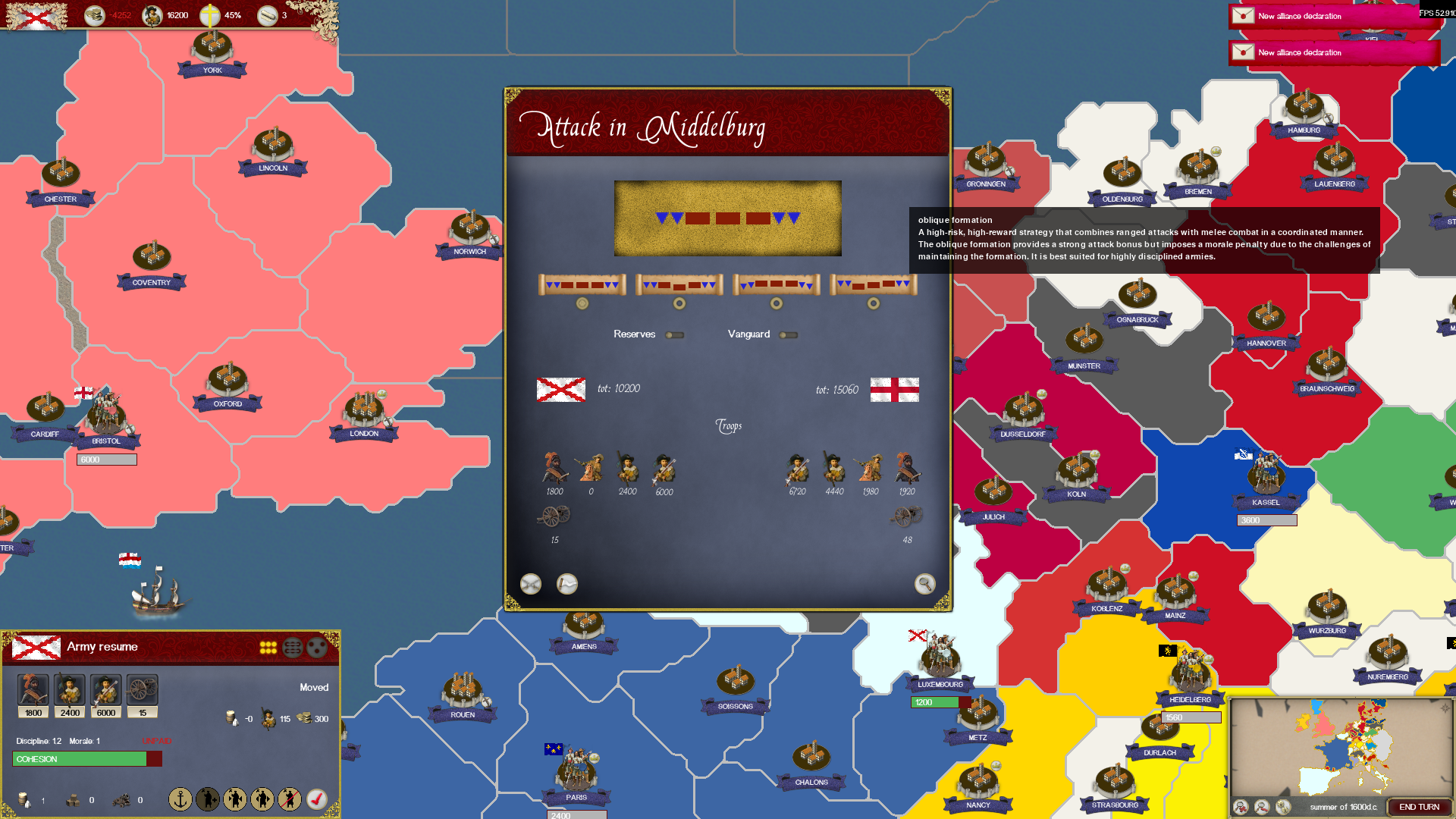Caracol: The Combat System
Beyond managing territory and armies, the most crucial aspect of Caracol is undoubtedly the battles. I have dedicated special attention to them to provide an experience as close as possible to that of the strategists who clashed on 17th-century battlefields.

A Brief Historical Context
Today, with GPS devices and advanced communication systems, it's hard to imagine what it was like to command an army of tens of thousands of men in the 1600s. Orders had to be delivered through visual signals (such as banners) or couriers, making it nearly impossible to coordinate forces throughout the entire battle. Often, the most critical decisions were made before the fighting even began—supply lines, troop formations, and attack plans were the only things a commander could truly control. The rest was left to colonels on the front lines.
The goal of Caracol is to recreate this ‘top-down’ perspective, giving players the responsibility of developing the right tactics for each battle. You’ll be able to arrange battalions in different formations, decide how to use cavalry, organize reserve troops, and much more!
Battle Structure
Each battle is divided into four main phases: Approach, Engagement, Clash, and Pursuit. Each phase represents a key moment of the conflict and influences the final outcome.
1. Approach
This phase represents the armies’ approach to each other. The defending force, positioned in a more or less fortified location, must hold its ground while targeting the advancing attackers with artillery and ranged troops. As the enemy gets closer, their fire becomes more accurate. This is a critical phase where losses can be high if the opponent has strong artillery and marksmen.
2. Engagement
Once within firing range, the attacking troops can finally return fire. At the same time, the attacking cavalry—if present—joins the fight, clashing with enemy forces.
3. Clash
The outcome of this phase depends on the attacker's chosen strategy.
- Defensive formations will hold their position, relying on the firepower of musketeers and artillery.
- Offensive strategies will send assault troops, such as pikemen and cuirassiers, into close combat, aiming to break enemy lines.
Reserves and vanguard units can play a decisive role here—reinforcing weak points or preserving part of the army in case of defeat.
4. Pursuit
If one army is routed, the winner can launch a cavalry pursuit. This final phase can determine whether the enemy force is completely destroyed or if its survivors escape to fight another day.
Tactics & Formations
Players can currently choose between four different formations: Standard, Offensive, Crescent, and Oblique. Each has advantages and disadvantages and should be chosen based on the battle conditions.

1. Standard Formation (Defensive)
By the late 16th century, European armies had begun to deploy more musketeers than pikemen, while cavalry primarily relied on the caracole tactic. The standard formation reflects this trend, emphasizing firepower.
- Best used when: The player has more musketeers than the enemy or wants to minimize losses in case of failure.
2. Bastioned Formation (Offensive)
This formation arranges battalions in a checkerboard pattern, providing an attack bonus. Pikemen will charge the enemy line while being supported by cavalry on the flanks.
- Risk: Harder to maintain unit cohesion, and a failed assault leaves the army vulnerable to pursuit.
- Best used when: The army has a high number of pikemen.
3. Crescent Formation
The most aggressive and effective formation in the game. Heavy cavalry is positioned on the flanks, while infantry engages the enemy center in close combat. The cavalry does not use the caracole tactic but instead charges the enemy with swords and lances.
- Risk: Extremely costly in cavalry casualties.
- Best used when: The player has a numerical advantage.
If no cavalry is available, this formation functions similarly to the bastioned formation.
4. Oblique Formation
Popularized in the 18th century by Prussian King Frederick the Great, the oblique formation was not widely used in the 1600s. However, it will still be an option in Caracol, combining melee assaults with musket volleys for a balanced approach.
A System in Progress
The combat system is still being fine-tuned, and I have several ideas for future improvements. I am considering adding battalion-level unit management and special forces, among other mechanics.
I’d love to hear your thoughts and suggestions for refining this system, so let me know in the comments!
In the next development diary, we’ll take a closer look at the units at your disposal and how they will shape your strategy on the battlefield. Stay tuned!
Caracol - Wars of Religion in the XVII Century
Turn-based empire strategy builder set in the 17th century
| Status | In development |
| Author | Manu |
| Genre | Strategy |
| Tags | 2D, Board Game, grand-strategy, Historical, Indie, pygame, Turn-based, Turn-based Strategy |
| Languages | English |
More posts
- What’s New in Caracol: Map Upgrades, Battle System Overhaul, and More44 days ago
- International Loan system update79 days ago
- Caracol: Units detailApr 03, 2025
- New Feature: Faction Loans & Trade CentersMar 07, 2025
- The first grand strategy in pygame?Jan 27, 2025
- Caracol, announcement!Jan 03, 2025
Leave a comment
Log in with itch.io to leave a comment.